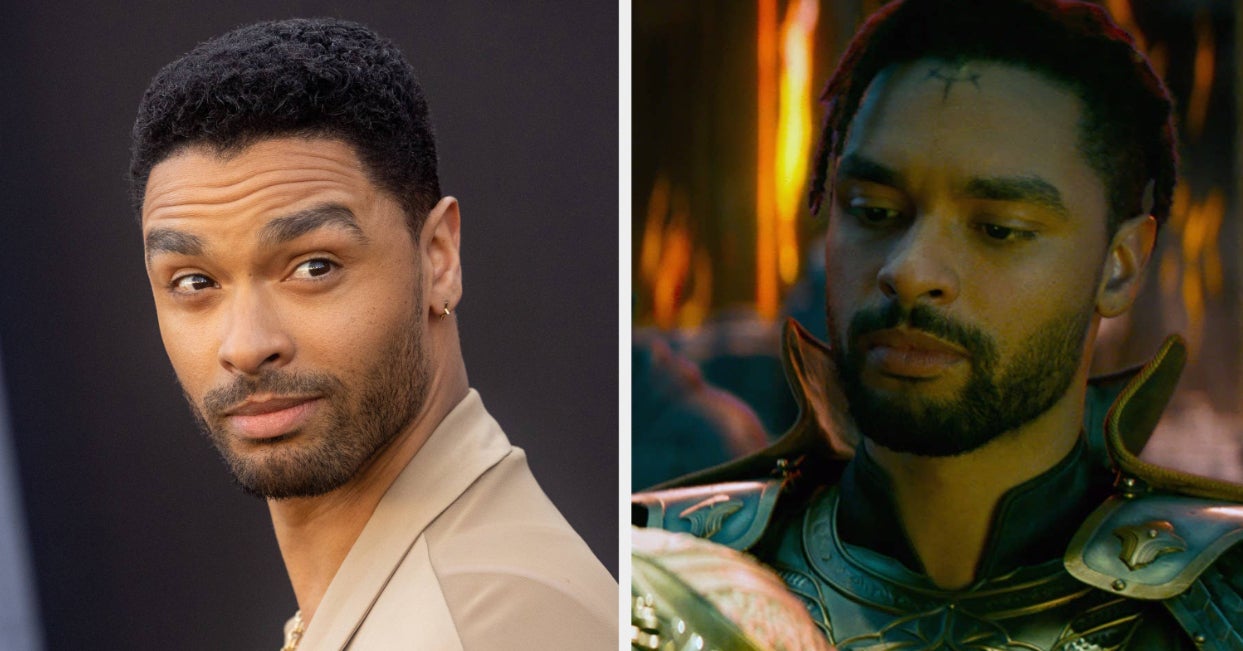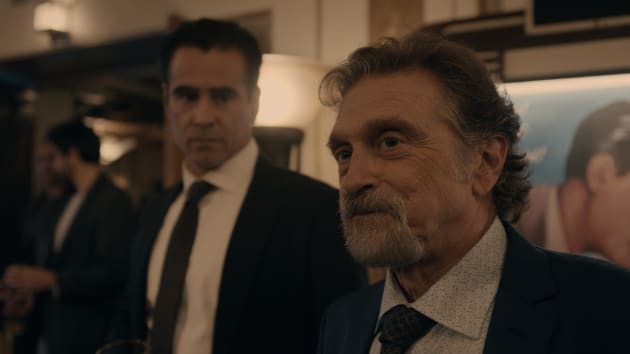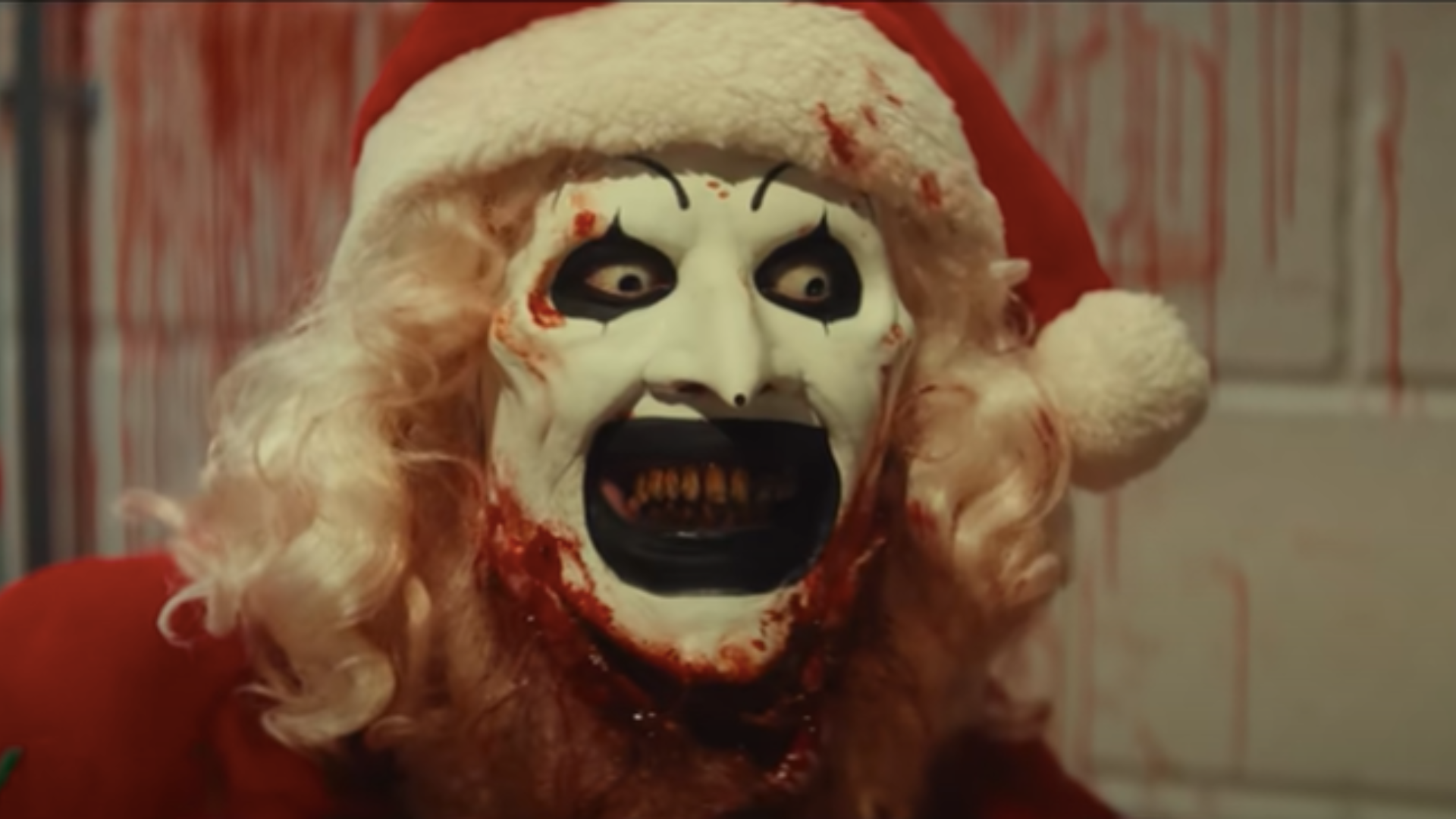[Warning: The below contains MAJOR spoilers for Fargo Year 5, Episode 7, “Linda.”]
Fargo isn’t new to tackling the surreal, and the latest Year 5 installment, “Linda,” does just that as Dot (Juno Temple) takes a trippy journey down the road to Camp Utopia.
As fans will recall, Dot was seen driving away from having dropped off her daughter Scotty (Sienna King) at Indira Olmstead’s (Richa Moorjani) home in Episode 5. She resurfaced in the form of battered photos enclosed in a file presented to Lorraine (Jennifer Jason Leigh) in Episode 6, and now, viewers rejoined Dot on the road.
Sleepy and motivated, she keeps inching her way toward a destination we have yet to understand. Upon stopping at a rest area for a bite to eat, Dot smiles down at her stack of pancakes before continuing her “journey.” Following her to a windmill, viewers see Dot dig up a postcard to Camp Utopia with a message from Linda that reads, “I’m sorry.” But who is Linda?
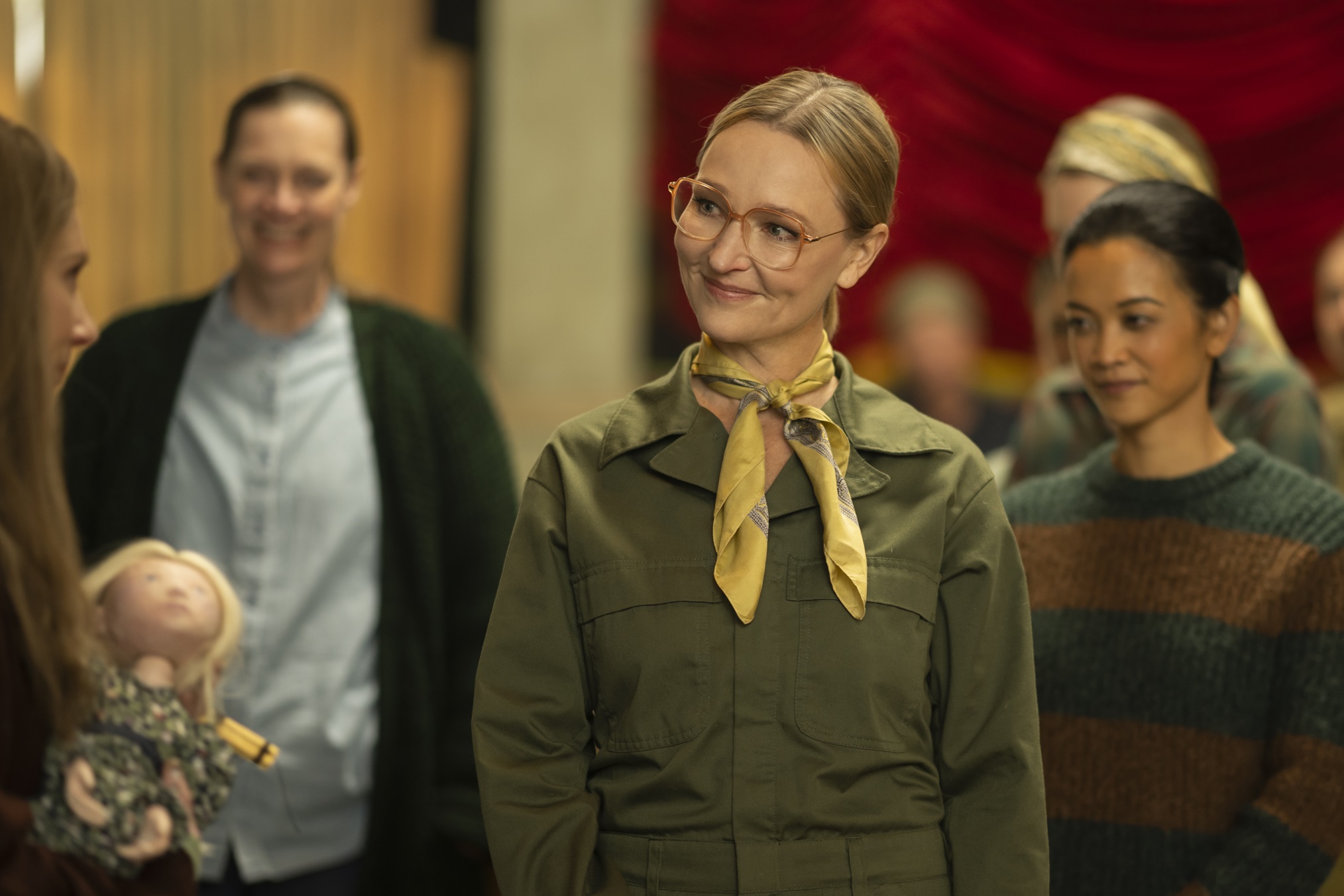
(Credit: Michelle Faye/FX)
Dot goes in search of her at Camp Utopia, which turns out to be a sanctuary in the woods for battered and abused women. Taking on the moniker Linda, they work through their traumas by creating puppets and reliving the bad memories in order to move on. Their leader happens to be the Linda that Dot was looking for. But instead of greeting her with kindness, Dot attacks Linda (played by Kari Matchett).
The first wife of Dot’s abusive former husband, Roy (Jon Hamm), Linda, supposedly disappeared from the Tillman Ranch, and Dot blames her for allowing Roy to victimize her. Dot pleads with Linda to return home with her so they can report Roy for his crimes and protect her family, but Linda reiterates that she cannot leave Camp Utopia more than once.
Linda and other “Lindas” push Dot to create a puppet of her own and present her trauma on the stage so she can be metaphorically reborn, and then Linda might consider actually leaving the sanctuary. And so Dot makes a puppet of her own and reveals the story of her past which involved Linda taking her in to live with the matriarchal figure, Roy, and their son Gator (Joe Keery). As the puppet show carries on and Roy’s abuses are made even clearer, the marionette medium offers a more palatable (but no less painful) version of events.
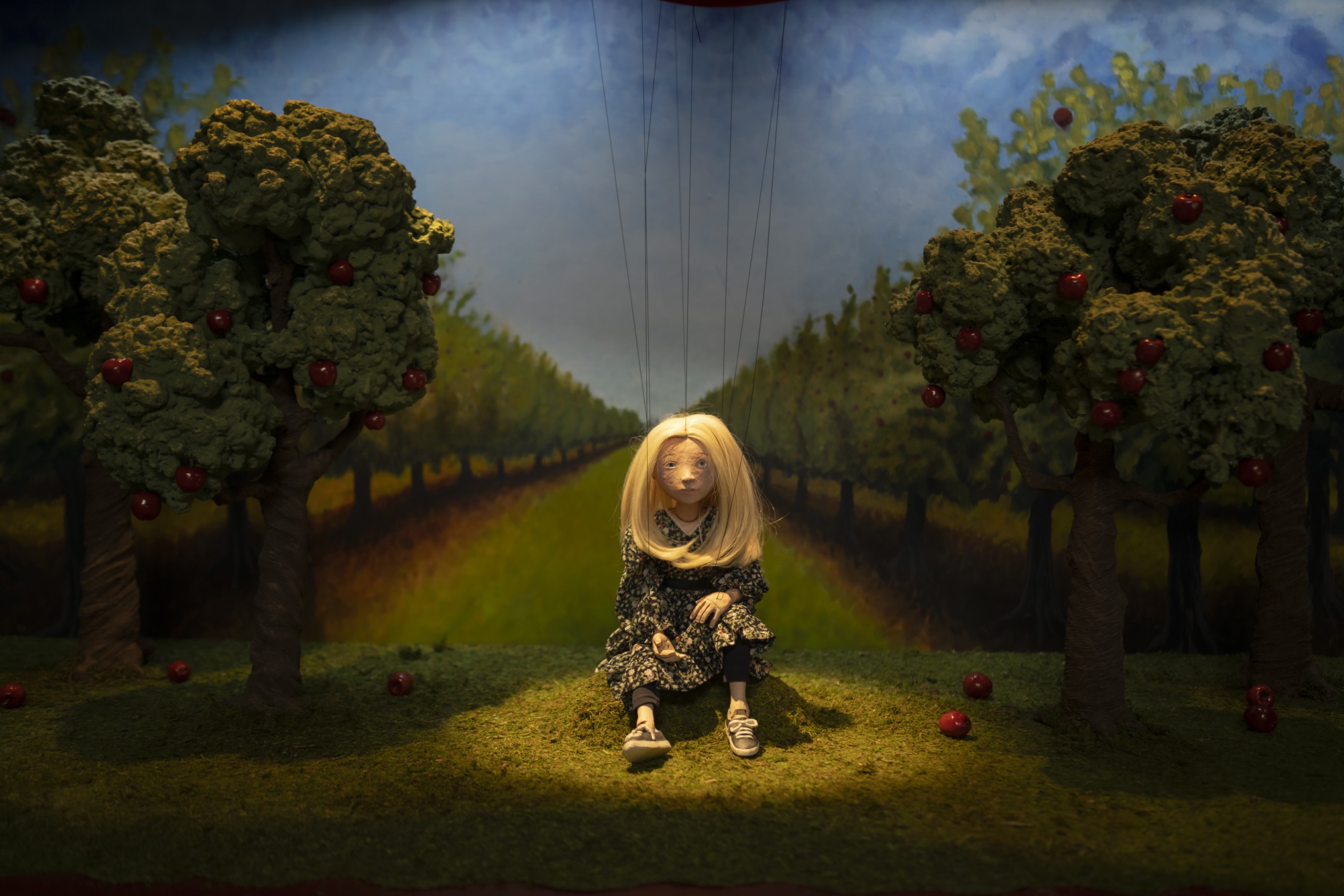
(Credit: Michelle Faye/FX)
What ensues is a horrifying and mesmerizing sequence as Temple takes on the voices of all roles in this miniaturized puppet world. Once she has taken this journey, Dot declares her name once more, claiming her identity as Dot Lyon, never to be known again as Nadine Bump. When Linda finally agrees to travel with her, the women are in the car on the road together when Dot jerks away, having daydreamed over her stack of pancakes at the rest area.
It turns out Camp Utopia isn’t real after all but merely a fantasy. Still, Dot doesn’t let this slow her down as she heads out to the parking lot so she can resume a journey we have yet to understand and may never actually see. When a truck spins out on the slippery road, it collides with cars in the parking lot, pushing one into Dot, who later awakens in the hospital.
Confused, she asks for Linda but is only informed by a nurse that her husband is nearby and has been by her side since she was brought in. But it isn’t Wayne (David Rysdahl) who has shown up. No, Dot has finally come face-to-face with her abuser as Roy enters the room and delivers the stomach-dropping line, “I got you.”
While the cliffhanger ending will make way for some interesting revelations and events that “Linda” co-writers Noah Hawley and April Shih hint at, below, they’re also breaking down all of the Easter eggs that tease the dreamy reality of Dot’s trip to Camp Utopia, open up about the use of marionettes as a storytelling device, and address Linda’s role in the story. Plus, scroll through this story for behind-the-scenes looks at the puppet sets and dolls.
Why Marionette Puppets?
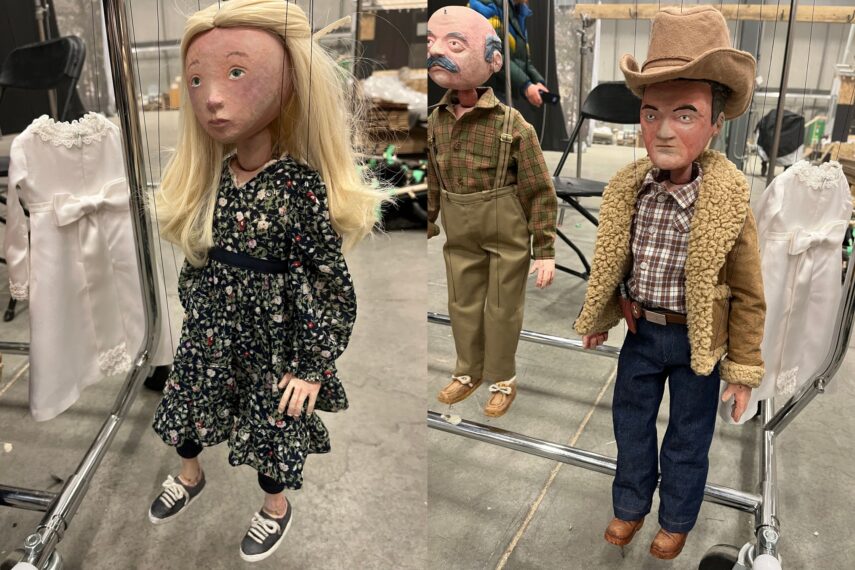
(Credit: Kim Todd/FX)
Tackling domestic violence in the tone of Fargo is a unique task; as Hawley notes, “I always try to avoid melodrama and try to figure out a way to tell the story without traumatizing the audience.” The showrunner reveals that he grew up learning about the topic from his mother, Louise Armstrong, who he points out wrote quite a bit on domestic violence. “I grew up talking these issues through and meeting the women who survived them and lawyers who fought for the rights of domestic violence victims. It’s a very serious subject.”
If someone wants to tackle such heavy topics in a show with Fargo‘s darkly comedic tone, Hawley says, “You have to be very careful how you choose to do that. If you go too far into farce, you can’t be a serious show and if you go too dark, you can’t sustain the comedy. And so for me, it was about finding a way to tell the story and have her confront her past in a way that stuck within the tone of the show.”
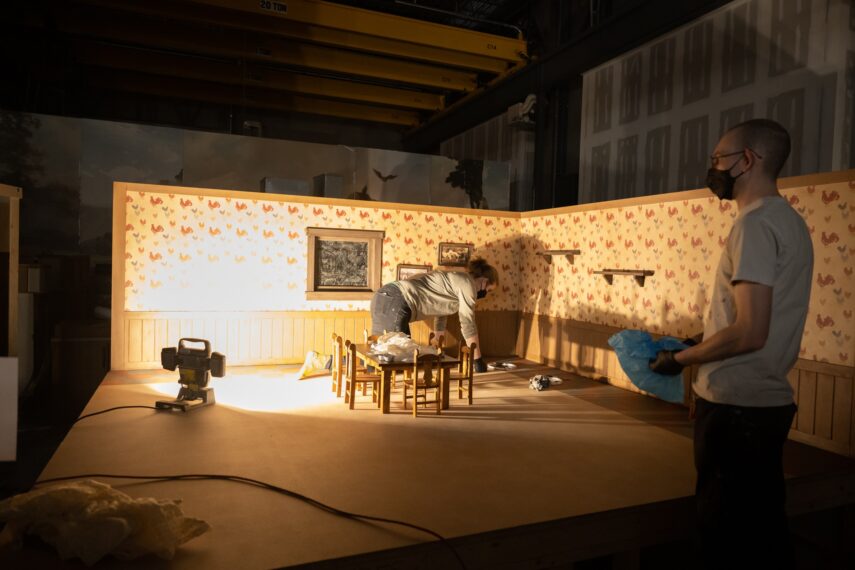
(Credit: Michelle Faye/FX)
Hawley says he was inspired by a therapy approach in which a therapist gives a patient a doll and uses it to point out the ways they’ve been abused. “I started to think about that and this idea of confronting Dot’s trauma through the use of a doll, which I thought was visual and interesting.” On a less serious note, Hawley acknowledges, “I also thought that it was funny that this multimillion-dollar drama would end up having a 10-minute puppet show… that seemed funny to me.”
The medium also allowed for Hawley and Shih to present viewers with the harsh realities of Dot’s past life without making viewers want to turn away from their screens. “We wanted to find a way to tackle this subject that is obviously dark, but do it in a way that is accessible so that people can receive it without being completely traumatized,” Shih echoes Hawley. “There was an evolution of how it [ended up becoming] marionettes, but we also wanted to come up with a way to externalize Dot’s internal journey, the healing work she has to do to confront her abusive ex,” Shih adds. In other words, Dot had to go on the journey to prepare for the fight ahead.
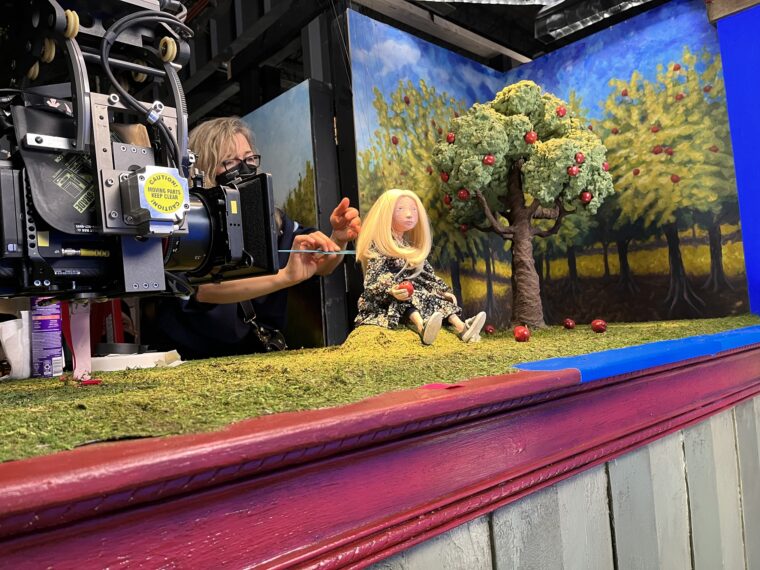
(Credit: Kim Todd/FX)
“The challenge in [Year 5] is for Dot to not end up in a tragedy,” Hawley says of the brewing future. “The only way she can avoid that is to face the trauma she went through. She comes out of that seventh hour as someone reborn because she’s not in denial anymore about what she went through. She’s no longer denying she was kidnapped. She’s no longer denying that this past that’s come back on her is real.”
“We also were very mindful of not wanting to perpetuate the depiction of violence against women on screen for no reason,” Shih continues. “I think we wanted to make sure if we were going to show anything, there was a real reason we had to.” That doesn’t mean the scenes are any less effective when watching Dot’s puppet show unfold. It’s upsetting and sobering all at once.
About the Design
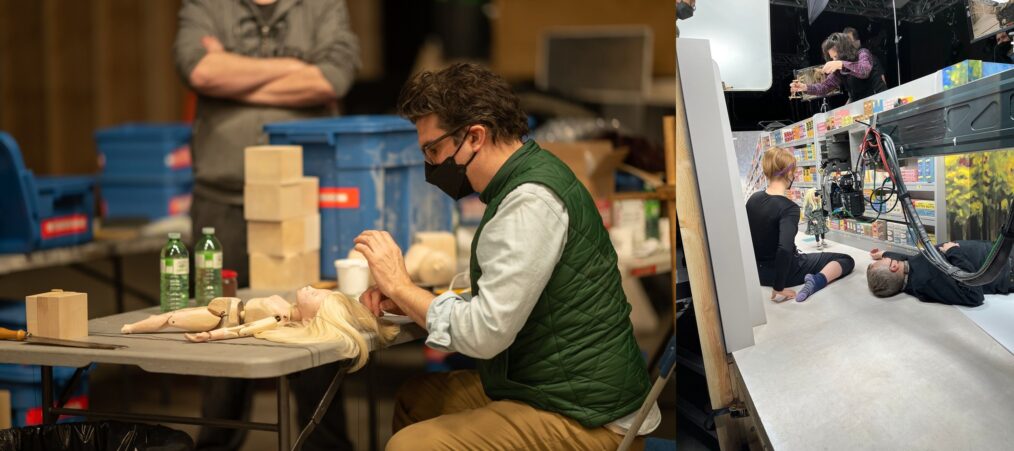
(Credit: Kim Todd/FX)
As shocking as the marionette puppets were to watch, there’s an undeniable beauty to their craftsmanship, which is on display in the behind-the-scenes photos. When it came to deciding on a look, Shih says, “It was a total collaboration. When we wrote the script, it was envisioned a certain way, and then through the prep process, location scouting, and looking at the art, it was definitely a group effort.”
“The production designer [Trevor Smith] — who’s so incredible — contributed to all the sets and coming up with the art direction. And then we brought on actual puppeteers and puppet designers to come and make the puppets,” Shih explains. “So they were heavily involved in the design as well. They would show us different mockups and ended up having the look [we see onscreen], and I think they’re very cute, which is what we wanted because it’s almost more disturbing to watch these horrific acts happen to very adorable-looking puppets.”
Dreamy Easter Eggs You Might Have Missed
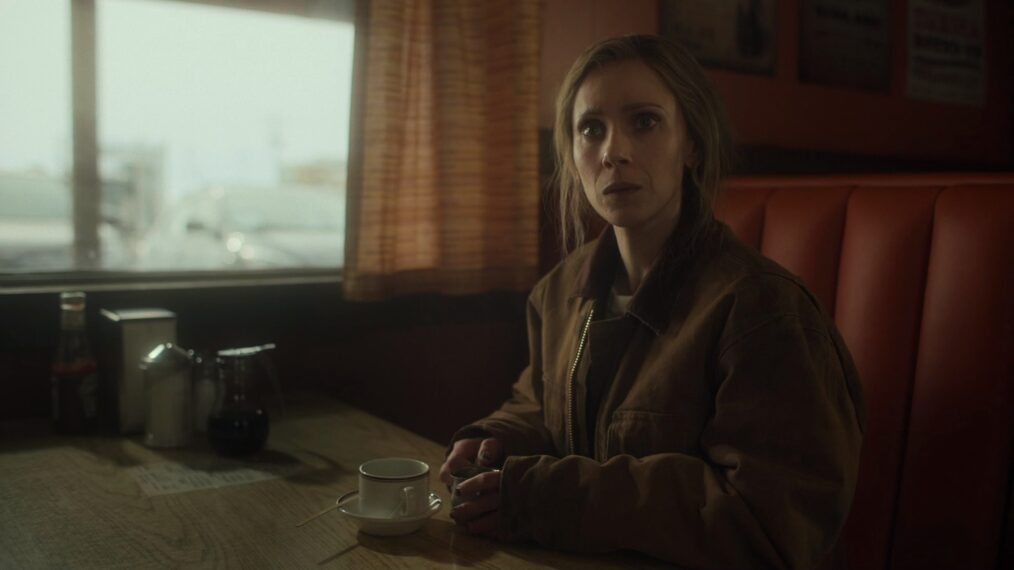
(Credit: FX)
“Linda” is an episode that may be even better upon rewatching as the rest area diner scene is filled with Easter eggs hinting that the journey Dot’s about to take is nothing more than a dream within her mind. Pulling into the parking lot, James & Bobby Purify’s “I’m Your Puppet” plays, hinting at what’s about to come. But it’s the moment she walks through the door that the puzzle pieces begin falling into place.
Walking by a rack of postcards, one of which has a design for Camp Utopia, Dot sits in a booth and looks over at the wall where a bulletin board is hung up. “On the bulletin board, you see the chicken piccata recipe [one of the “Lindas” prepared at Camp Utopia], and you see a [flyer for a] doll show,” Hawley points out, adding, “And where she goes to dig up the tin that has the postcard in it… in [Episode 8] she’ll realize why she saw that,” the showrunner teases.
“Those elements are in there… I don’t know if it’s for me to point out or not,” Hawley says before asking, “Did you notice any of the portraits of the women hanging on the walls?” If not, he suggests taking a closer look. As for fitting all the hints in, Shih says, “I think we erred on the side of putting in too much and probably shot a lot more than we needed to. Some things were probably cut out because it’s a fine balance. We want the audience to be able to, by the end of the episode, be like, ‘Oh yeah, it was a dream, and that makes sense.’ But we didn’t want them to feel it on the first watch.”
As for what takes place at Camp Utopia and the Linda viewers meet, Shih says it’s “a reflection of what’s going on in Dot’s head and her perception of her changes throughout the episode and the season. I think she had to create a story to protect herself, and the story involved Linda being kind of the villain, and through doing the work in this episode, Dot realizes that’s not entirely true,” Shih points out. “There are gray areas. ”
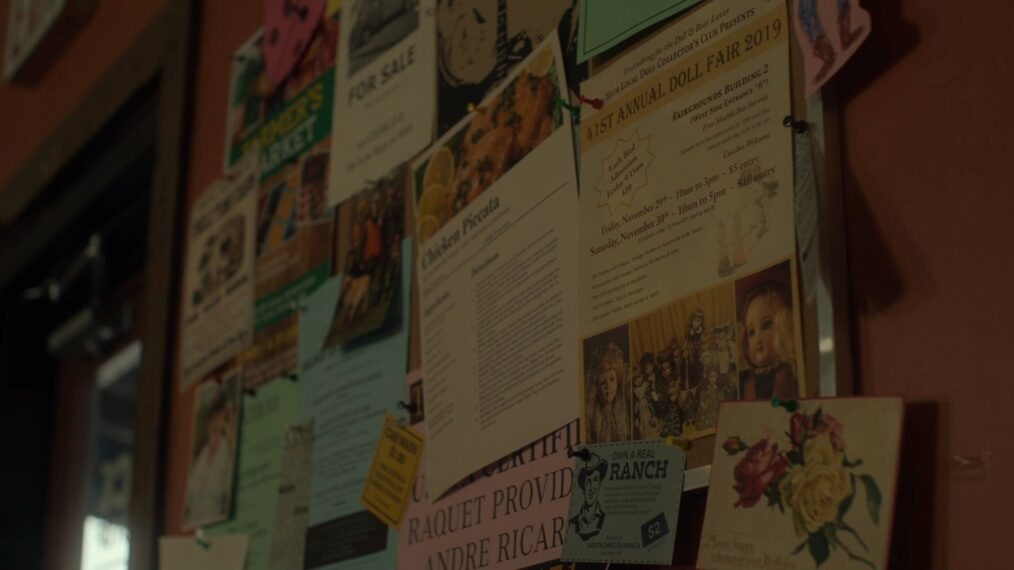
(Credit: FX)
Hawley points out that Temple does all of the voices in Dot’s puppet show, even for Roy, Gator, and Linda. “Juno really thought she should do them all herself,” he recalls. “The moment I heard that, I agreed because it is her memory, it’s her story. All the voices are Dot’s voices. All the ‘Lindas’ are versions of her, and Camp Utopia’s the locked room in her mind she doesn’t want to go to.” Ultimately, she’s forced into that space when the diner waitress asks Dot if she’s running away from home or running toward home. “She doesn’t know at that moment,” Hawley says, “and I think there’s nowhere for her to go until she faces the truth.”
What’s Coming Next?
As mentioned above, there was a major cliffhanger with Dot and Roy coming face-to-face for the first time on screen, but there were also other events that set into motion the next big moments for the installment, including Gator’s decision to target Ole Munch (Sam Spruell). Instead, the young man shot at a strategically positioned corpse, broke into the man’s car containing his money, and accidentally killed the ancient figure’s “Mama” in the process. What could possibly go wrong from such events?
“It’s definitely the last straw,” Shih teases of Munch’s patience with Gator and the Tillmans. “He had an emotional investment in this relationship, and I think he needs to get revenge in his own way or find whatever the repayment of that debt will look like,” she teases.
Regarding Roy and Dot, Shih says, “She’s been running for many years, and something needed to have switched for her to actually be able to stand up to him. She’s done all this work, and then in that exact moment, she has to confront the actual fear… I think she goes from somebody who’s living a facade of a life that she really wants to be this person that she really wants to be.”
Will she win the fight? Tune in to see as Fargo Year 5 continues on FX.
Fargo, Year 5, Tuesdays, 10/9c, FX (Next day on Hulu)



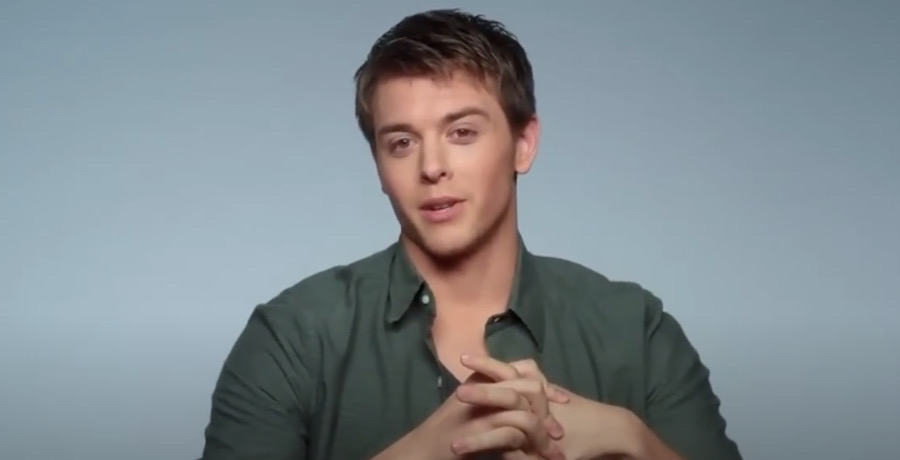


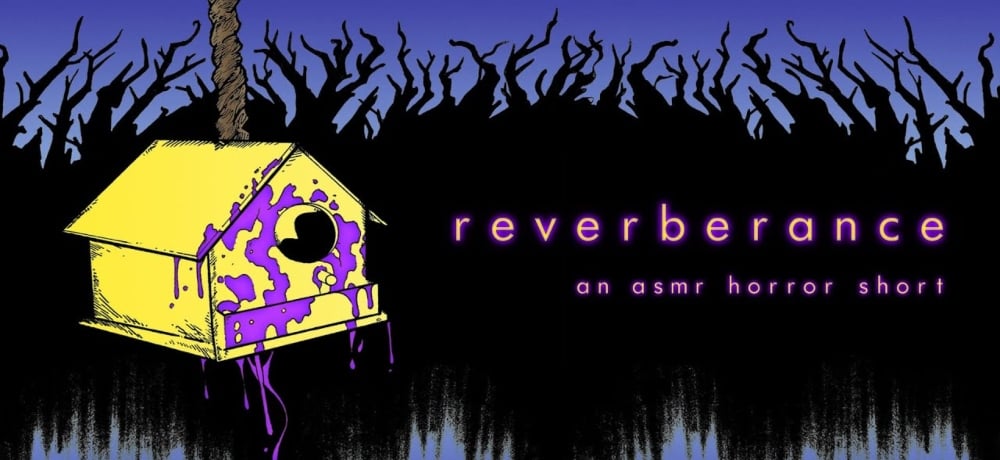
:upscale()/2023/12/26/720/n/1922564/tmp_poY6AR_73a1ad9568042a26_EwingxYandel-4.jpg)








